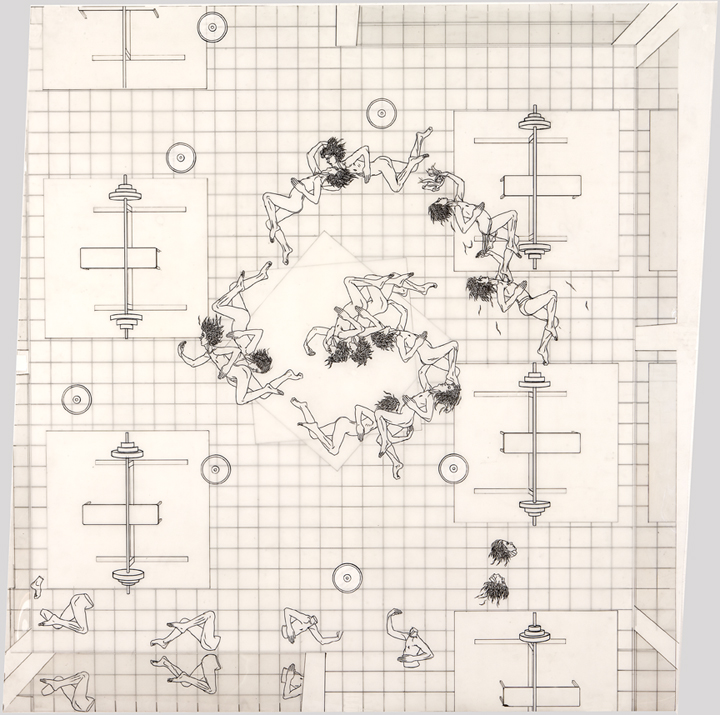Michael Bilsborough
Michael Bilsborough was born in the desert of California. He received a BA from Columbia University in 2001 and his MFA from School of Visual Arts in 2006. Bilsborough's work is precisely crafted and often monumental in showcase. His figurative work corresponds to biological ideals, while the spaces they inhabit belong to geometric archetypes. His work all draw from real-world memories. He is currently based in New York. We caught up with Micheal to ask him a few questions about his art.
Dennis: How did your passion for the arts and figurative work begin?
Michael: Being born.
Who are some of the other artists who inspire you?
Friendship, or at least a personal relationship, with the artist is a condition of inspiration, at least for me. Rachel Mason, mostly a performance artist, inspires me to magnify my vision. TM Davy inspires me to keep it close to the source. Kathryn Garcia inspires me to balance my motivations with my audience. Sam Gordon inspires me to keep my eyes open. There are much more: Keith Mayerson, Frank Haines, Robert Melee, Lisa Kirk, and Scott Hug.
How did the use of drafting film in your work come about?
Many years ago, I was walking in the desert where I grew up and found a map printed on a translucent plastic sheet. I knew right away that I could use this material. It enables me to draw on both sides and build up drawings in layers. I also like how a translucent material embodies the transparency of how I'm drawing. I pursue drawing as a record of thinking, deciding, and even fantasizing and for that kind of transparency, it's fitting to use a see-through material.
In your figurative work, we have seen men with men, women with women and men with women. What inspired you to vary your pairings?
An artist has to see dreams (or nightmares) in male and female bodies alike. There's little room for preference. There are times when I intentionally draw women while thinking of a feminine space, or men in a masculine space. But sometimes, I draw figures and the gender just emerges by accident: I begin to draw a man, and then see that he'd look better as a woman. Or vice versa. Anyway, I think my pairings are quite unvaried. I haven't taken on intersexed and transsexual figures. I've also left out youths, animals, plants, produce, tools, furniture, and many other counterparts known to mythology and reality - for the most part. There is the occasional wine bottle or fruit.
That brings us to our next question, You have spoken about your Catholic background in past interviews and we can see this influence especially in some of your early works. What are your thoughts on it today?
Going to church while growing up meant visiting a life-sized, semi-nude, polished Christ on the cross once a week. Every Catholic church has one and to varying degrees, it's the focal point of the congregation. In my work, every figure is potentially a crucified Christ, because that image is at the center of my "figurative" imagination. For a while, Catholic art - the Italian Renaissance-inspired some of the pictures I made. Now that's less of an influence. And personally, I think the institution of the Church is so regressive that I can only respond with hostility. I don't like to bring hostility into my art. Or maybe I don't know how.
What advice would you give the young artists of today?
Make friends with artists you really like and stay close to them.











